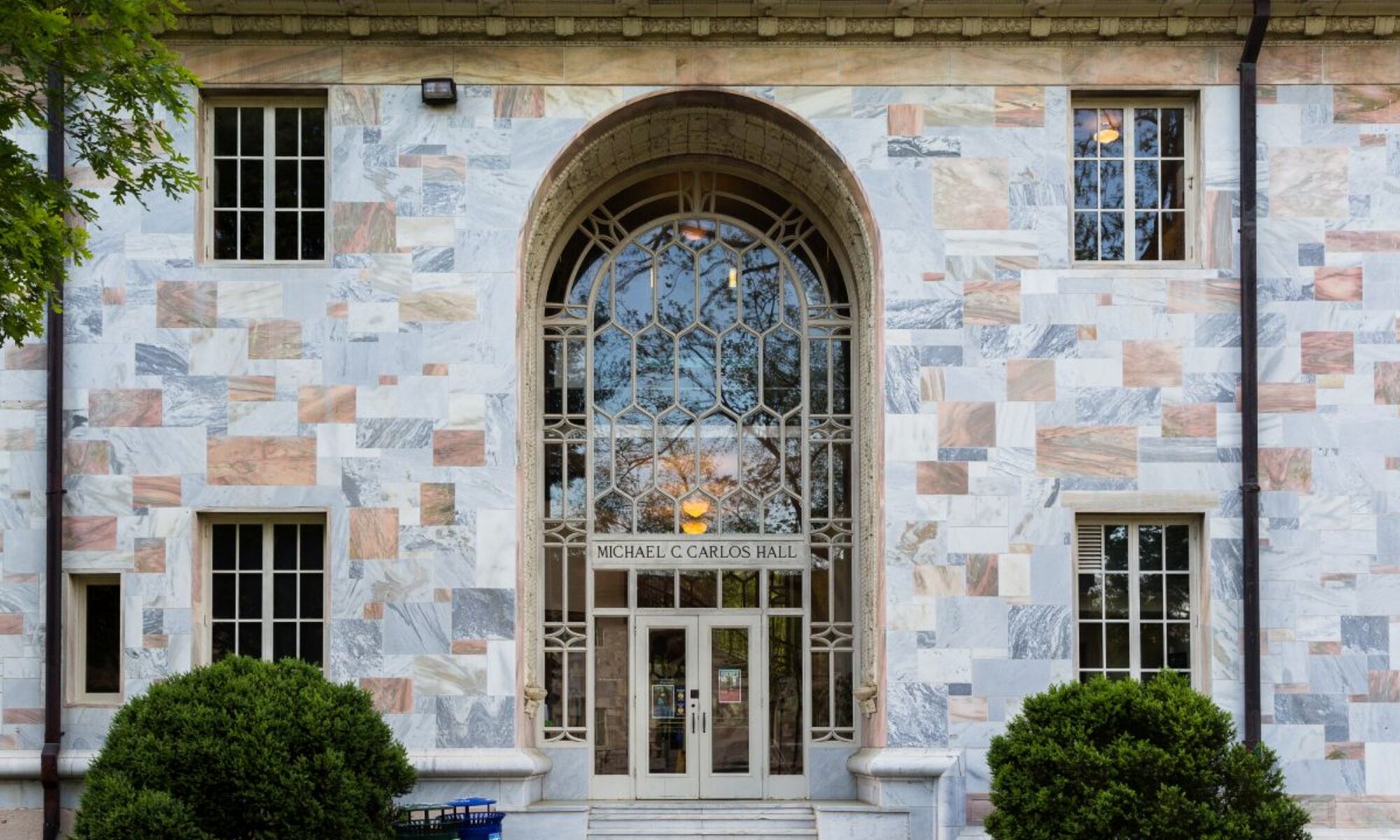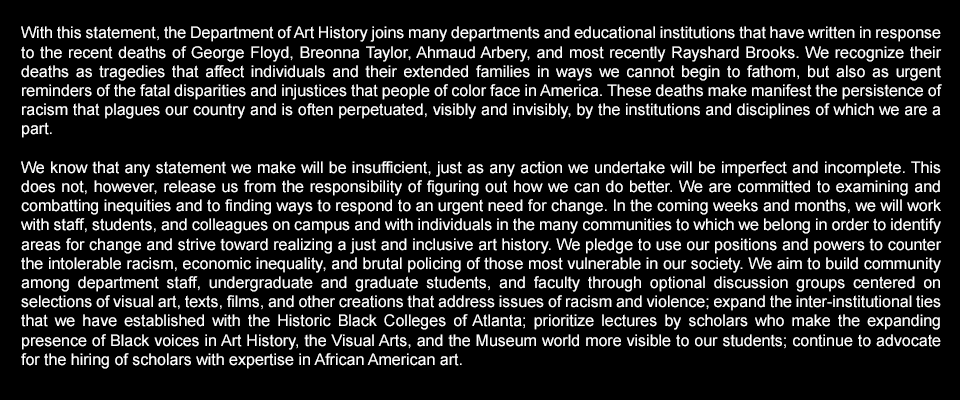
The following images both capture and constitute moments in the history of protest and advocacy for Black lives, written in the language of art and architecture. All are drawn from collections and institutions in Atlanta and the Southeast. A number are by Atlanta-based artists.
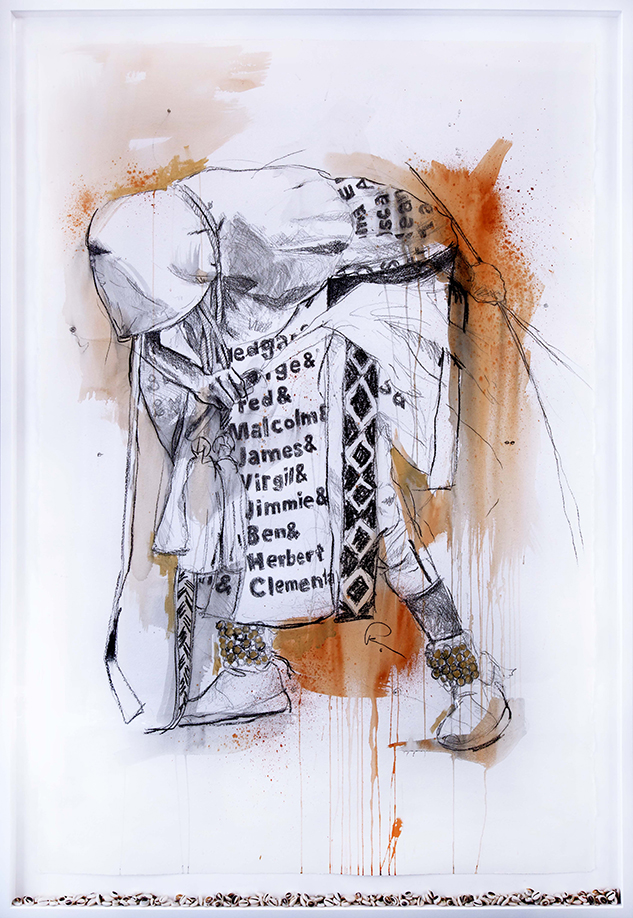
Fahamu Pecou, Egun Dance II, 2016. Graphite and acrylic on paper with cowries. Anonymous gift. Michael C. Carlos Museum, Emory University (2017.1.2)
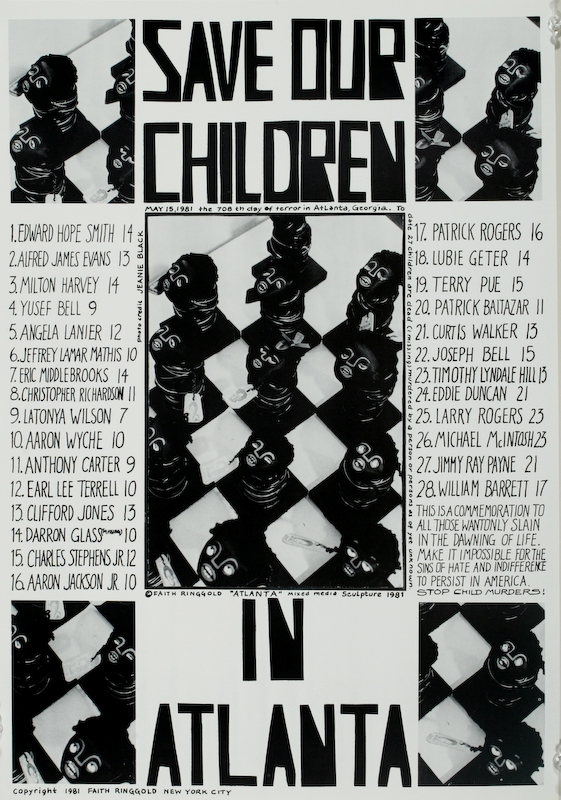
Faith Ringgold, Save Our Children in Atlanta, 1981. “This is a commemoration to all those wantonly slain in the dawning of life. Make it impossible for the sins of hate and indifference to persist in America. Stop child murders!” Camille Billops and James V. Hatch archives at Emory University, Stuart A. Rose Manuscript, Archives, and Rare Book Library, Emory University. Gift of James Hatch and Camille Billops, 2002, with subsequent additions from 2011-2018. Manuscript Collection No. 927, OP 17.
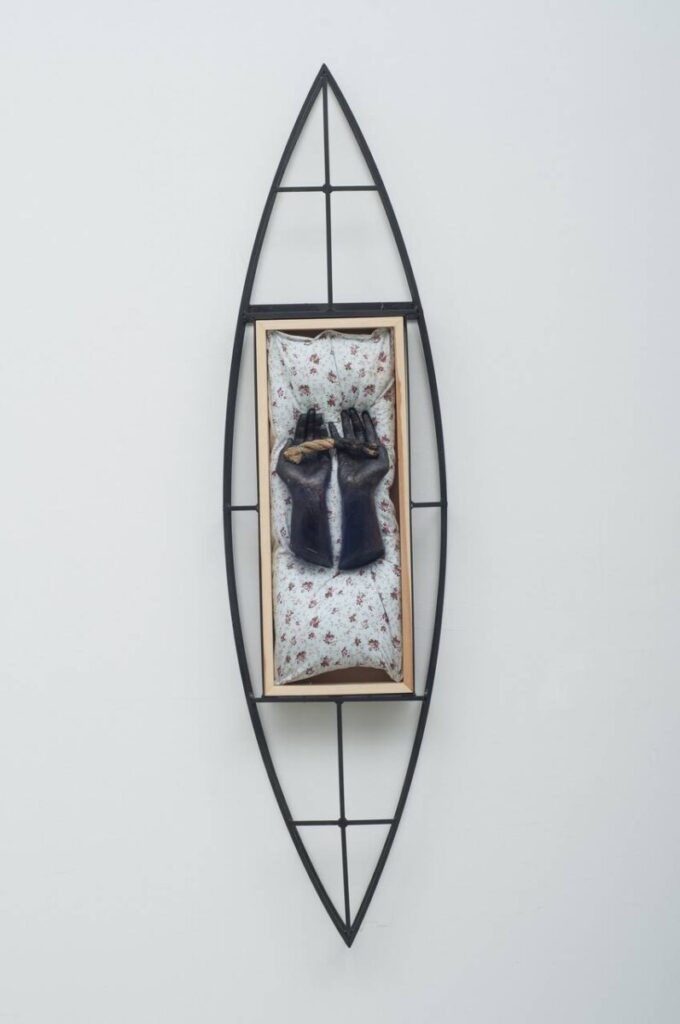
Masud Olufani, A Sentiment, 2015. Forged Steel, Resin, Rope, Pillow Panel, Sardine Cans, Photograph and Paint. MOCA GA Permanent Collection, Working Artist Project Winner transfer, 2016.014.
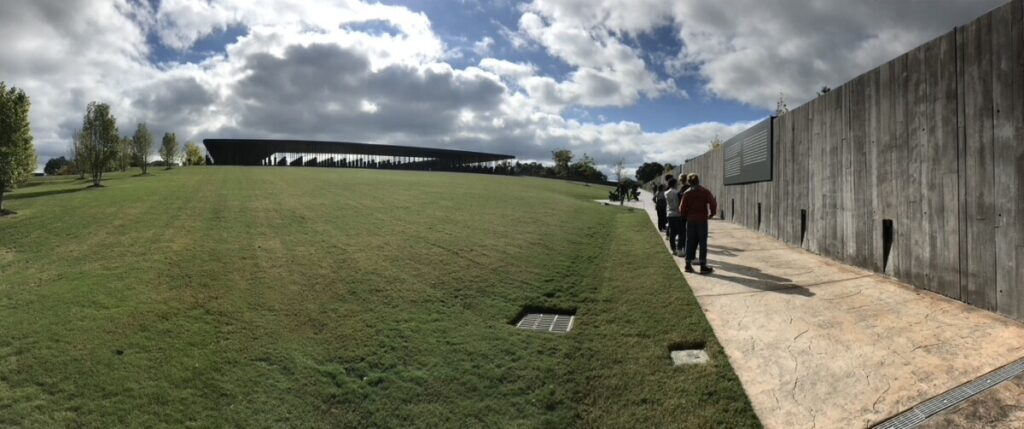
The National Memorial for Peace and Justice, Montgomery, AL, 2018. “The nation’s first memorial dedicated to the legacy of enslaved black people, people terrorized by lynching, African Americans humiliated by racial segregation and Jim Crow, and people of color burdened with contemporary presumptions of guilt and police violence.” Architect: MASS Design. Client: Equal Justice Institute. Photo: Christina E. Crawford, 2019.
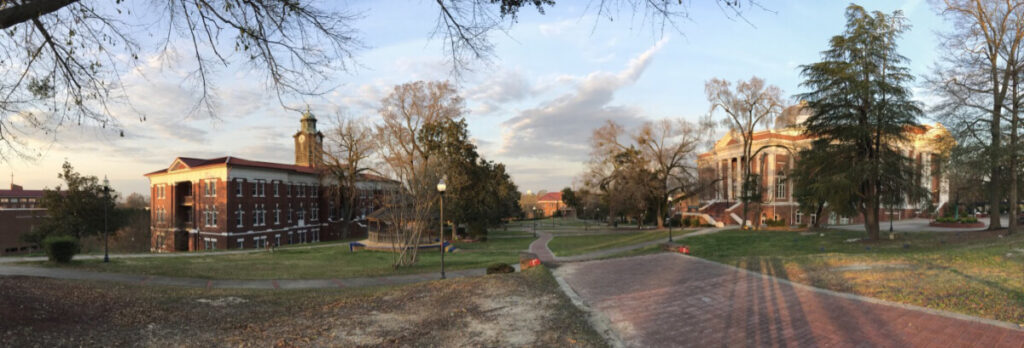
Tuskegee University (formerly Tuskegee Institute) campus design and architecture, Tuskegee, AL, 1892-1932. Architect: Robert R. Taylor, first Black graduate of MIT (class of 1892) and nation’s first accredited African-American architect. Photo: Christina E. Crawford, 2019.
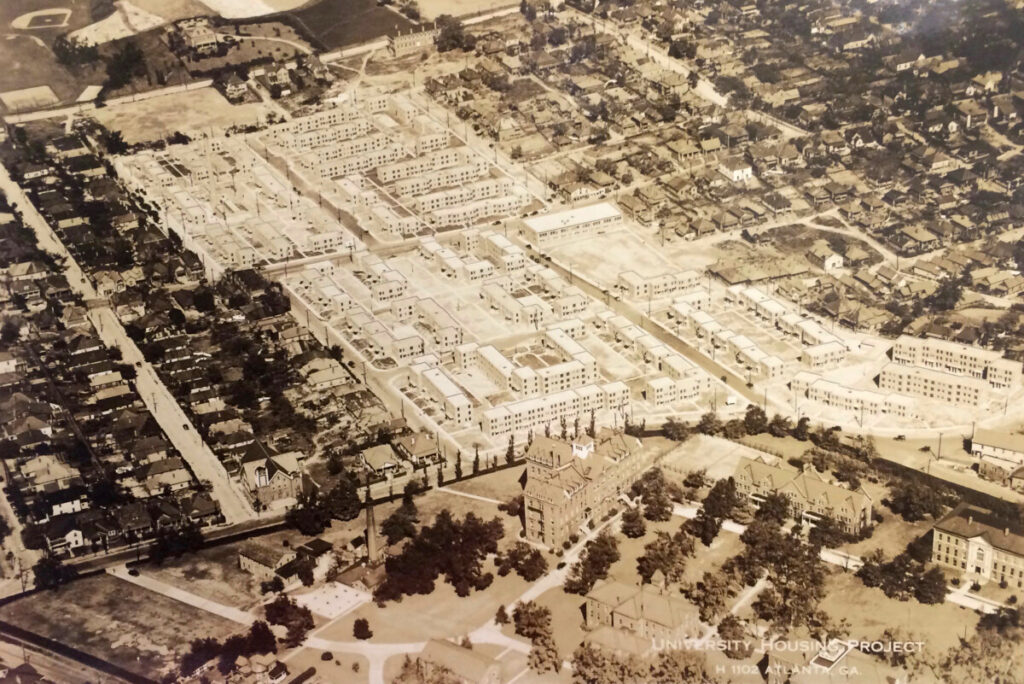
University Homes, Atlanta, GA, 1937. University Homes was the first federally funded public housing project in the United States for Black families, built concurrently with Techwood Homes, for white families, to maintain and codify housing segregation in Atlanta. Designed in modernist architectural idiom, University was more architecturally spare, and also more daring, than neo-Georgian Techwood. Architects: Edwards and Sayward. Photo: Charles F. Palmer papers, 1903-1973, Emory University (Stuart A. Rose Manuscript, Archives & Rare Book Library, 1934), Box 167, Folder 10.
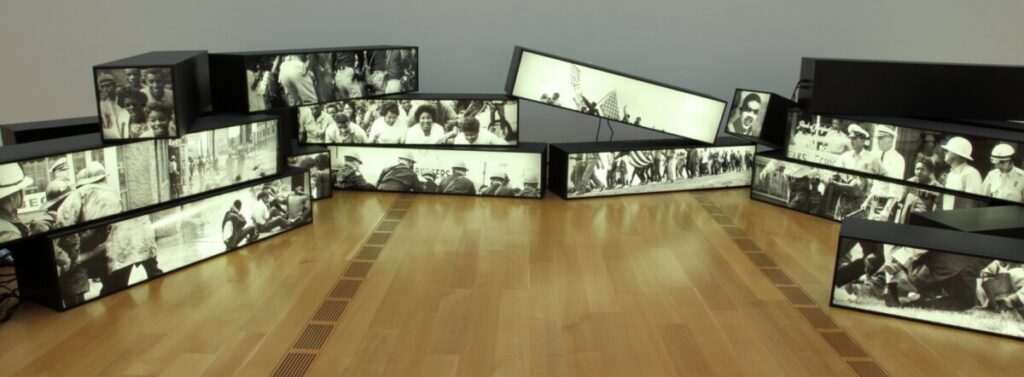
Afredo Jaar, The Fire Next Time, 1989. Twenty-two metal light boxes with black-and-white transparencies. High Museum of Art, Purchase with funds from the National Endowment for the Arts, the 20th-Century Art Acquisition Fund, and funds from Alfred Austell Thornton in memory of Leila Austell Thornton and Albert Edward Thornton, Sr., and Sarah Miller Venable and William Hoyt Venable (1989.51)
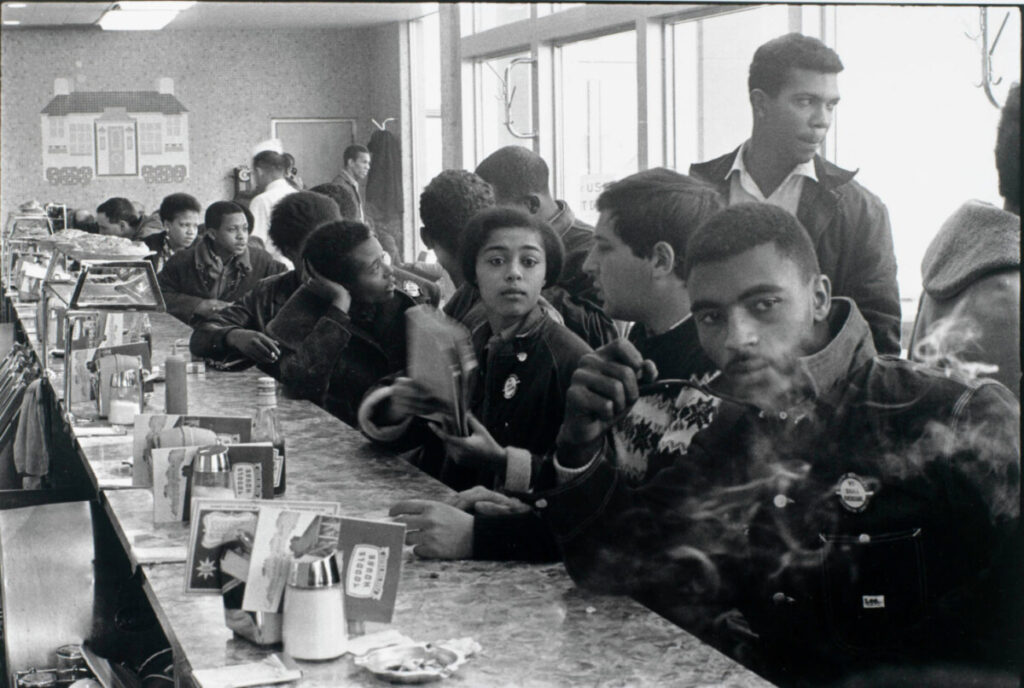
Danny Lyon, SNCC Activists Sitting at a Lunch Counter, Atlanta, Winter, 1963-64. Gelatin silver print. High Museum of Art, Purchase with funds from the H. B. and Doris Massey Charitable Trust and Lucinda W. Bunnen for the Bunnen Collection (1994.65)
